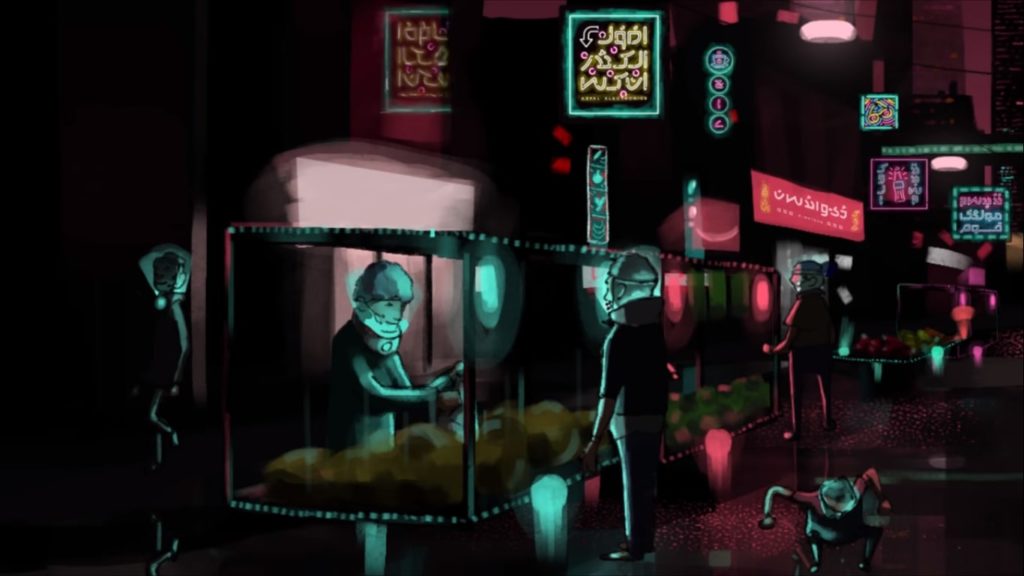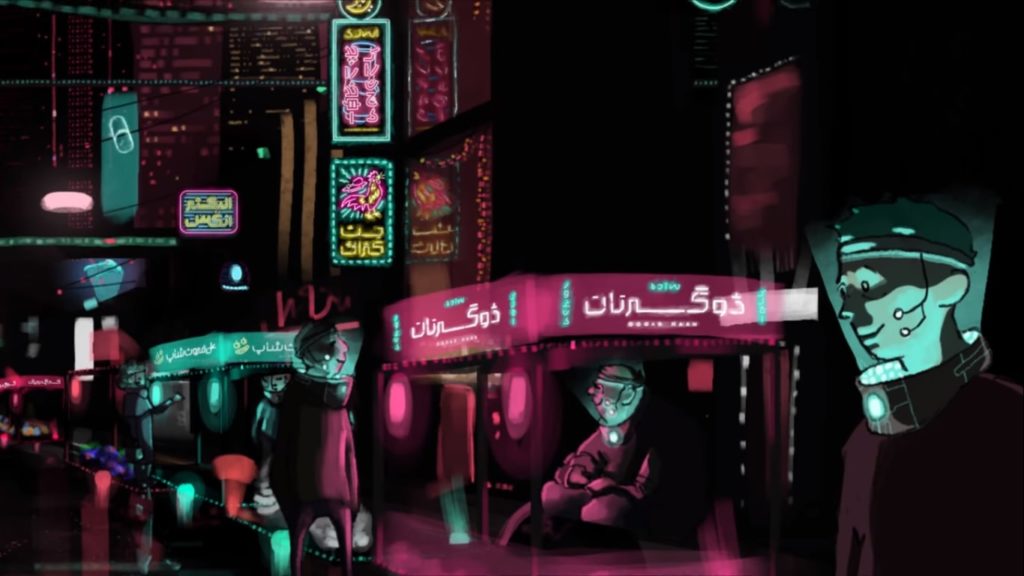
Flickering lights. A whirlwind of neon. Flying rickshaws. Robotic surveillance. Smiling. Mounting unease. Shehr-e-Tabassum is an immersive experience. The first film in Pakistan to grace the shores of the cyberpunk genre, it shocks the senses with a subtlety that is unseen elsewhere in the country.
Shehr-e-Tabassum is a creation of the social initiative Shehri Pakistan, a social initiative geared towards releasing non-alienating content in Urdu that aims to provide civic education and legal literacy to average Pakistanis. Arafat Mazhar, the director of Shehri Pakistan, also happens to be the director of Shehr-e-Tabassum. Mazhar’s aim with this film is to expand upon the realities of oppression, surveillance and persecution, take them further and show them in a heightened technological arena, which the world is on its way to becoming, or perhaps already is.


Shehr-e-Tabassum was released on youtube on the 29th of February, Saturday. Initially, the team behind this phenomenal film held screenings in different institutions, followed by an elaborate discussion deconstructing the overwhelming sensory experience that those eight minutes induced, and then finally, a repeat of the film, simply because even if you think you’ve understood it on one viewing, there’s so much more in it that you’ll notice on your second, third and fourth viewing!
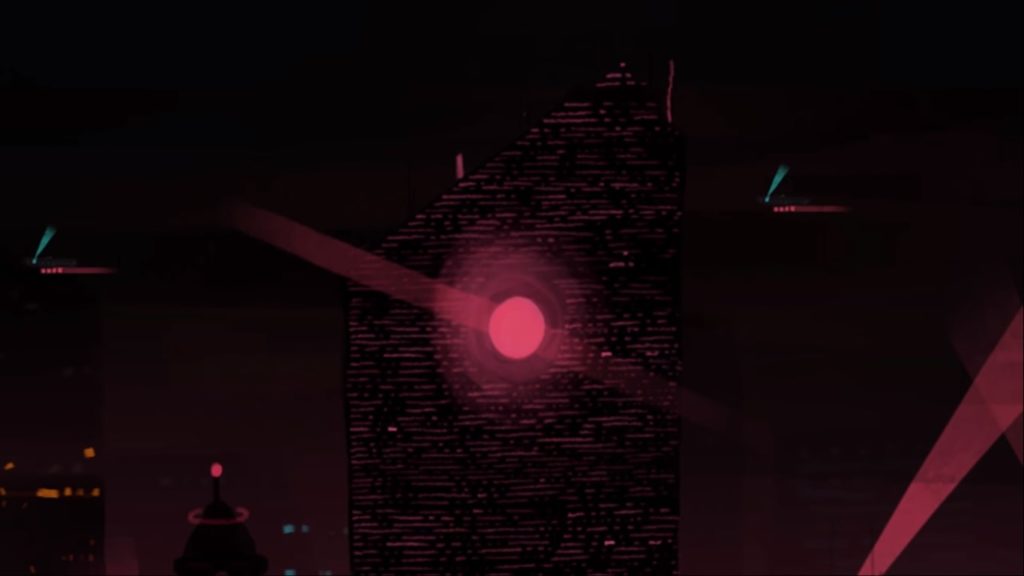
Borrowing from classic dystopian pieces of literature or film, Shehr-e-Tabassum’s creators have been heavily inspired by Blade Runner, Akira, and even George Orwell’s iconic publication ‘1984’. The film grapples with concepts of systematic subjugation, repression, and a totalitarian state.This is particularly evident in the Panopticon-esque tower visible throughout the film, a red light shining through a circular crevice in the skyscraper, conducting non-stop surveillance upon the citizens. Orwell’s dystopian symbol of the Big Brother is a conspicuous motif that is interspersed throughout the eight and a half minutes of this film. The anxiety inducing narrative montage within Shehr-e-Tabassum is so sensory that it is of no surprise that the end of the film leaves one fearful and perturbed.
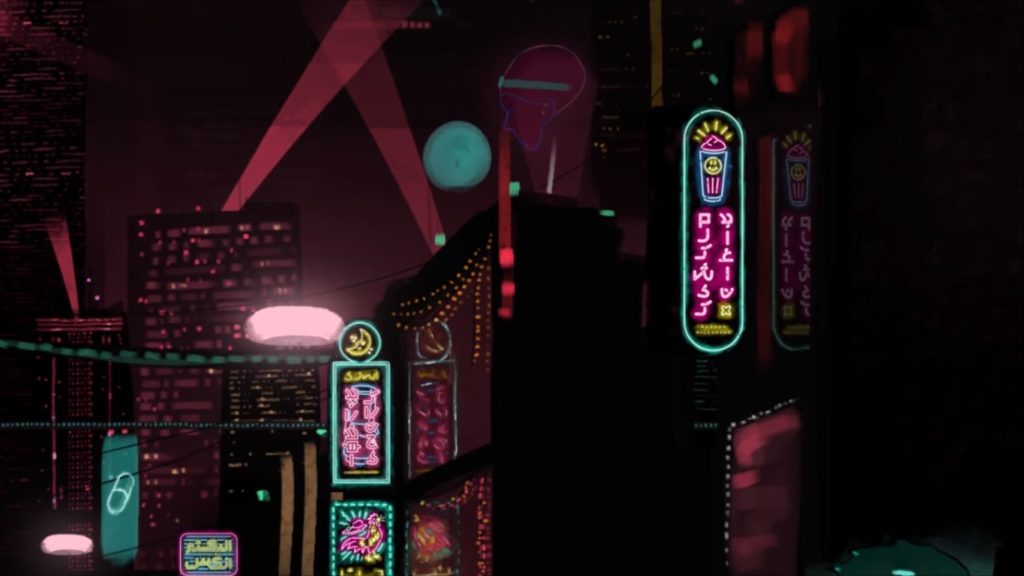
Courtesy of the brilliant animator Haseeb Rehman, intricate hand drawn animation was used. If nothing else, this film is an ode to vibrant shades and exceptional animation techniques. Although an arduous process, the entire eight and a half minute short was somehow remarkably animated only on Photoshop. The trailer itself is manifestly a striking work of art.

Told from the eye of the protagonist, the narrative journey of Shehr-e-Tabassum follows a woman witnessing horror and repression around her as she is forced by a government issued mechanism to never stop smiling. The city of smiles becomes a metaphor. A smile is simple, it isn’t divisive. It is simply you curving your lips upwards. It does not have political connotations. It is devoid of social or economic implications. A smile just is. It does not confuse the audience, doesn’t force them to pick sides. But in Mazhar’s film, a smile is alienating. It is an allegory for repression, and this is achieved in such a powerful way that it leaves the viewer bewildered, simmering with anxiety. The government of 2071 dystopian Pakistan forces its citizens to smile, unfailingly. The system coerces people into not expressing emotions, stripping them of their freedom of speech. Their reasoning is embedded within a fictional civil war that wrecked the country in 2038, a conflict based on religious, political, social and economic differences and disparities. The film makes you question, very successfully, whether the world it depicts is actually dystopian or if it’s simply an eerie extension of Pakistan’s reality.
A mother begging her child to stop being unhappy, fearing that the state will take him away. A man smiling while confessing that his child’s illness is worsening. Beggars, steeped in poverty but smiling all the same. These are some of the scenes that grip the audience, inducing a sudden whiplash of anxiety and terror.
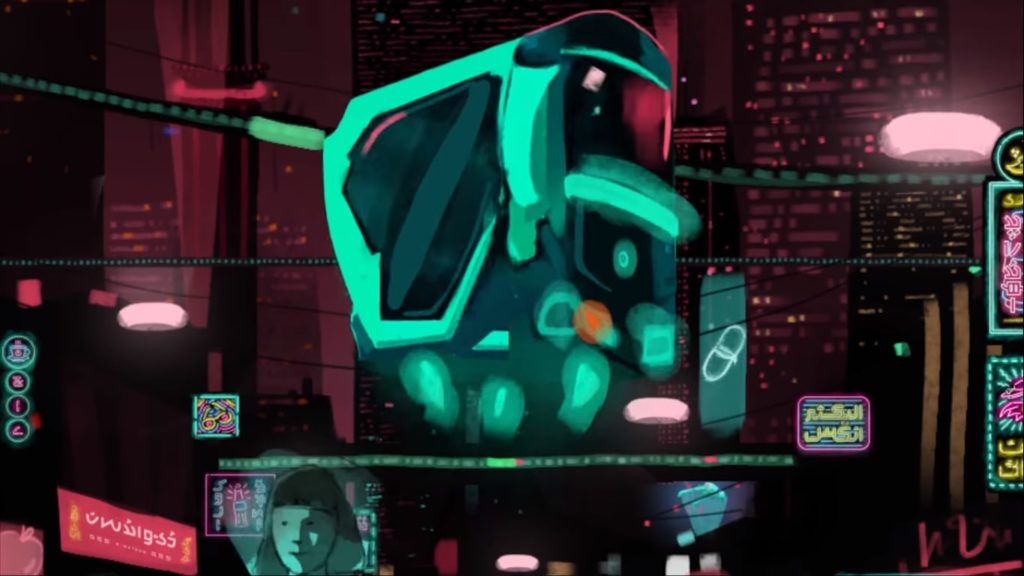

The fascinating Urdu cyberpunk fonts have been carefully crafted by Shumyle Haider, converging Nastaliq calligraphy with Mandarin lettering, alluding to the rapidly exacerbating Chinese influence within Pakistan, particularly the Pak-China corridor. Political hints have been weaved together with the final typeface that’s peppered throughout the short film.
If you haven’t seen this masterpiece yet, what on Earth are you waiting for?
